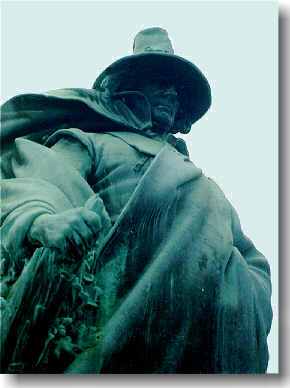
Waterfront
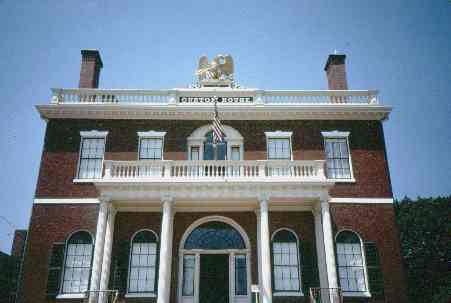
| Route 66 | Cities | Beaches |
 |
Waterfront |
 |
We define the Salem Waterfront rather loosely, extending it to mean everything from The Common (the downtown square) to the end of Pickering Wharf. It is the heart of your Salem visit. We give it one full day, including meals. It is actually a pretty demanding day, because you'll be on your feet continuously except for lunch, dinner and a few rest stops. The Waterfront, then, is actually the Salem Historical District for the period of Salem's great prosperity, after its citizens had risen above the crude shelters of Old Salem Village. People today might critisize the Puritan focus on unrelenting hard work, but the results cannot be denied : they advanced from dirt floors to the richest town in the world in less than a century. Much of this should be attributed to the vision, leadership and humility of one man : Roger Conant (above left). Conant's authority over his colony was erased by the King when he merged all Seven Crown Colonies into one Massachusetts Bay Colony and chose someone else to govern it. Yet Conant swallowed his pride and continued to lead the town of Salem until his death at 87, by which time he and his followers had achieved wealth beyond their wildest dreams, lived in America's classiest community, and did it without corruption or scandal. They just outworked the rest of the world. European stereotypes of "Yankee Ingenuity," "American Industriousness," and "The Land of Opportunity" mostly derived from Salem. |
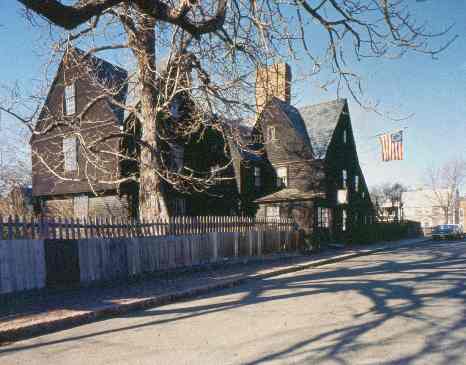 |
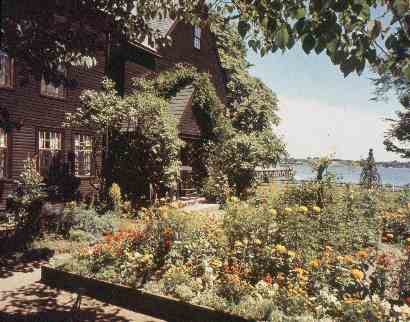 |
The House of Seven Gables (above and left) is a must on your Salem visit. This magnificent structure was the first mansion in America and was built way back in 1663. Facing the harbor, with a beautiful garden and its own dock, it would be a fitting residence for a millionaire today. Author Nathaniel Hawthorne grew up down the street, inherited the house and lived there. It was the centerpiece of his novel, "The House of Seven Gables." It is a big place even by modern standards, and your tour will take over an hour. The rooms are filled with furniture made by a craftsman named Allen, silver crafted by a young silversmith named Revierossi (later to be shortened by son Paul to Revere), the white and blue porcelain brought back from China to replace pewter, and rugs brought back from Persia (now Turkey). In all, more than 2000 artifacts or furniture pieces from the 1700s and 1800s are on display, plus several hundred valuable paintings and sculptures. A long list of guests spent nights or weeks here who would later become famous in American history, commerce or literature. Tours cost $12 each or $9.50 if in a group of 10 or more. There are also a museum, store and snack bar in nearby buildings. |
|
The East India Company was one of the foundations of Puritan prosperity. Chartered as a British Corporation in 1600, East India specialized in shipping tea to England, Europe and eventually America. But their ships were painfully slow. As the Puritans evolved the Clipper Ships, Salem captains began contracting with East India to carry their tea. That trade established their entry to ports around the world. They then expanded into other merchandise, including the delicate porcelain they named Chinaware, Persian (now turkish) rugs, sugar, coffee, silk, spices, and various alcoholic beverages, including wines from Madeira. Once they got established, not even the Barberry Pirates could stop the Puritans. The phrase "run circles around them" originated when the Puritan Clipper Ships would sail circles around Pirate ships trying to board and rob them. Unfortunately, entering the 1770s, mismanagement in London pushed the East India Company to the edge of bankruptcy. But it was one of the largest companies in England and most members of Parliament held stock in it. To protect their investments, and bail out the company, Parliament granted it an official monopoly. It would be the only company allowed to sell tea in America. Furthermore, a tax would be levied on that tea, which would be returned to East India as a subsidy to help pay its debts and eliminate the bankruptcy risk. At this point East India made the further mistake of using the monopoly to unload a backup of stale tea from their London warehouses. So Americans were forced to drink bad tasting tea and pay a premium price for it. U.S. history books tend to ignore this side of the issue. It was not just the tax the Sons of Liberty were protesting. It was the monopoly. They wanted the right to shop around for good tasting tea. Ultimately, this led to the dumping of a cargo of tea from an East India ship down at the Boston Teas Party. This is the only original East India Tea Company outlet left in America. |
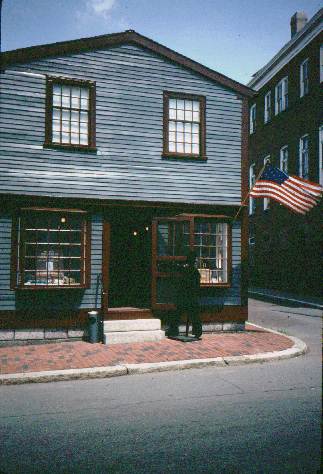 |
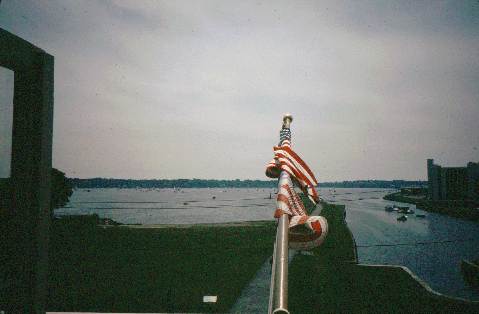 |
The Custom House (top right and here left) was critical to Salem prosperity and to Nathaniel Hawthorne's writing career. Hawthorne was a Customs Inspector. He inspected the cargo of every ship coming into or sailing out of Salem Harbor. From this office window he could see the entire inner harbor so could keep track of all arrivals and departures. In a time before income taxes, property taxes or sales taxes, the Salem Custom was the first tax levied by an American governmental unit. (British taxes were levied by Parliament.) The custom poured millions into Salem's treasury and allowed the town to build the finest docks. warehouses, loading and unloading equipment and shipyards in America, establish lighthouses along the coast, run a proper government, start a school, police and fire department, and otherwise develop an outstanding community. A Custom House was another brilliant Roger Conant idea that paid huge dividends long after his death. But it paid a very different dividend. At his desk at this window, when no ships were arriving or departing, Hawthorne wrote. He wrote all of The Scarlet Letter and parts of other pieces here. The desk he worked at is still on display by the window. |
| The Essex Museum is one of the top 10 museums in America. It displays artifacts from the first days of Salem, the building of the town, the craftsmen period, the witchcraft trials, the fishing industry, the ship building and world commerce period, the American Revolution, the career of Nathaniel Hawthorne, and the natural history of the ocean. This is no small town muiseum. It is a major research facility. The Puritans sailed their Clipper ships around the world, were the first to establish trade with China and Japan, and this museum reflects that with a collection of valuable items from those ports. Historians from everywhere come here to use the document collection. This is also a technologically sophisticated place; you interact with history in all sorts of innovative ways. The building itself is a work of art; you'll want to take pictures just of the architecture. There is a great book store and museum store. Various programs are offered for youth groups, but they change over time, so call ahead. You will come away astonished that a town this size can have a museum so much better than many major metropolitan areas. The Essex was created by the Salem Sea Captains Association in 1793 to house valuable objects they brought back from trips. | 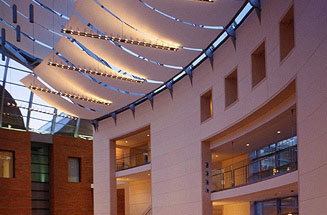 |
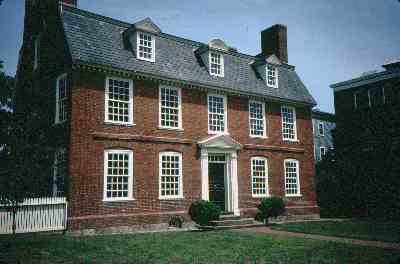 |
The Derby House is considered the finest example of Georgia Colonial architecture in North America. It was the first brick house built in Salem and the first brick mansion built in America. It was built by Richard Derby, who made his first fortune in the fishing industry, then made another one in shipping. His son, Elias, was the first millionaire in America. The house is on a small rise, overlooking Richard Derby's wharves and warehouses. Prior to the buildup to the American Revolution, the Governor of Massachusetts joined the Derbys for Sunday dinner here on numerous occasions, but the Derbys sided with the Sons of Liberty and there is some evidence the younger son was a member. The interior of this house is considered one of the most beautifully crafted in the nation, using various woods and other materials. |
The Friendship is anchored directly in front of the Custom House, alongside Pickering wharf out from the Captain's Restaurant. It is a 171 foot, three masted, square rigged, 342 ton vessel, registered in 1797 to Jerathmiel Peirce and Aaron Waite. She was built during 1796 by Enos Briggs in the Salem Shipyard, just across the water from Pickering Wharf. The Friendship sailed the world trading for spices, sugar, coffee, teas, chinaware, silks, exotic woods, and wines. The Essex Museum has logs of her voyages and receipts of moorings at Shanghai, Java, Sumatra, Madras, London, Hamburg, Archangel and St. Petersburg. Her logs indicate additional stops at Genoa and various ports in Portugal and Spain. She was captured by the British while blockade running during the War of 1812 and used as a military transport vessel for two years, finally being abandoned in Halifax, Nova Scotia in 1815. Except for the USS Constitution, the Friendship is the largest wooden sailing vessel presently certified by the US Coast Guard in New England to carry passengers on the open sea. Today, the Friendship is available most days for tours. She takes frequent day long sails out of Salem Harbor onto the open ocean, and a few times each year sails down the coast to participate in Tall Ship celebrations. |
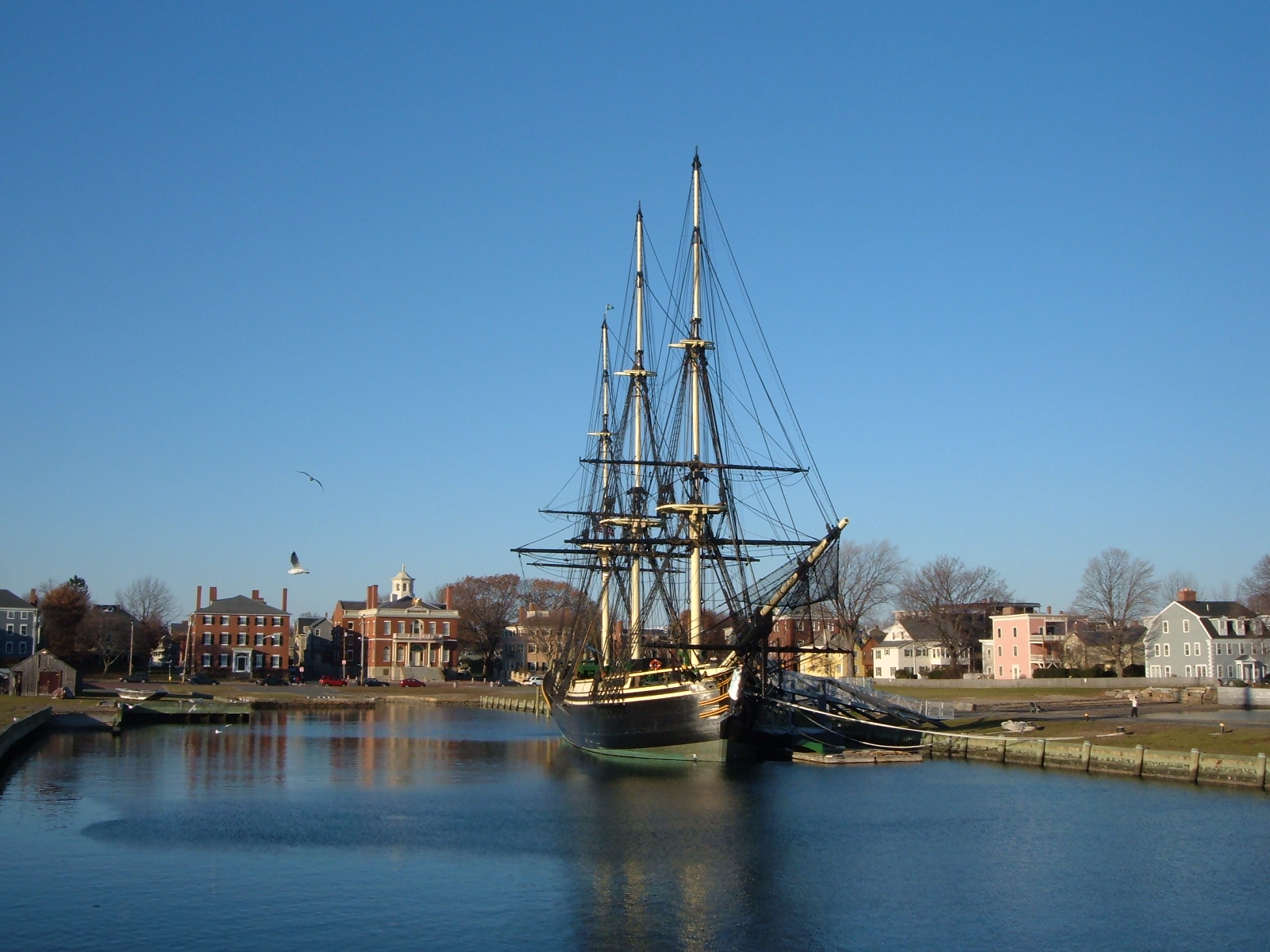 |
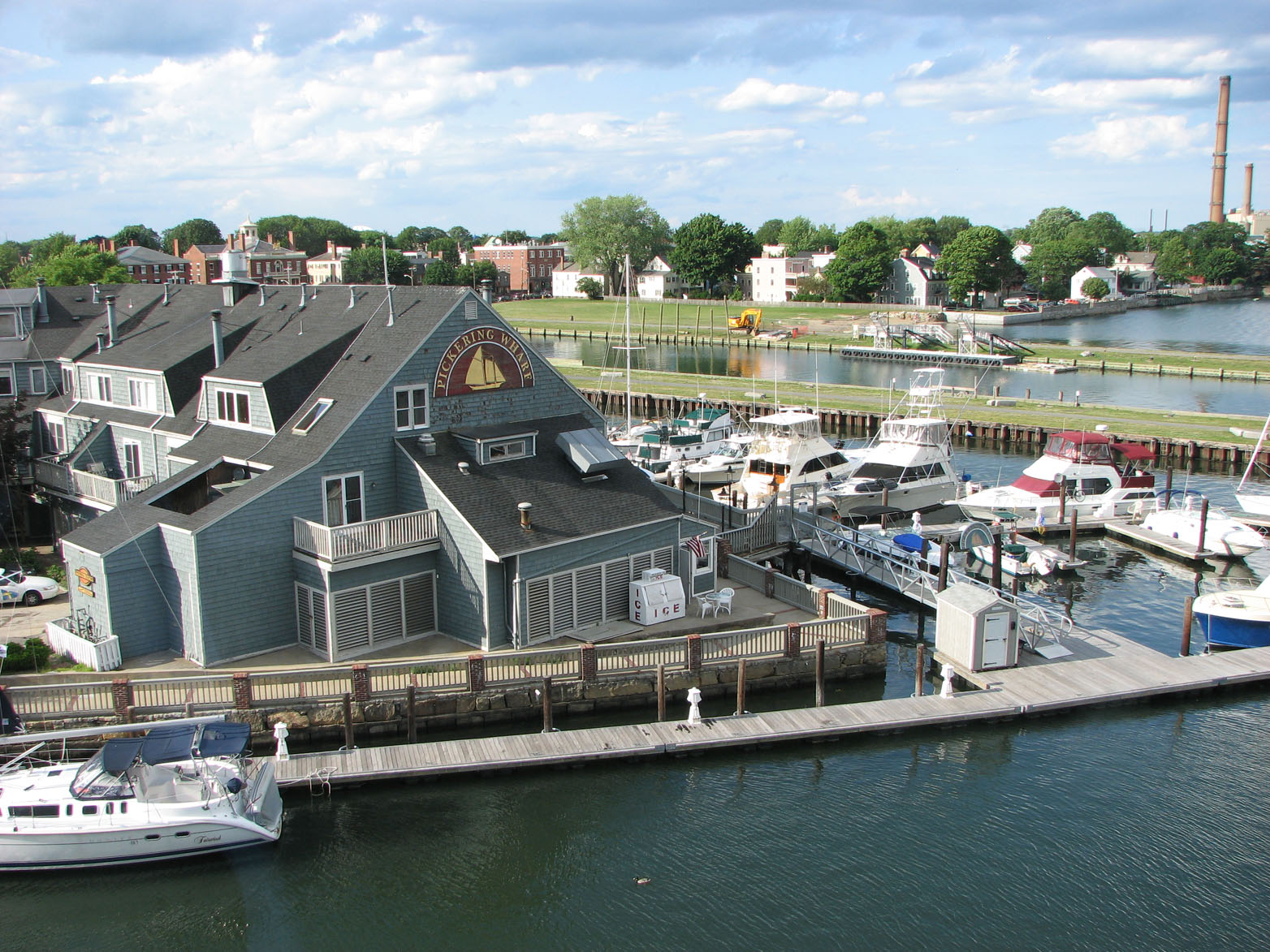 |
Pickering Wharf extends along the front of the Custom House, Derby House and other historic buildings. In addition to its historic value, and the Friendship anchored alongside, it houses several dozen restaurants, shops, and stores. Several original wharves have decayed and were not replaced, and the warehouses are gone. But the main wharves have been rebuilt in their original location exactly as they looked when this was the busiest seaport in America. During the Revolution, with Boston Harbor blockaded by the British, American privateers used Salem Harbor, and the house adjacent to the Derby House was one of their headquarters. With their sleek Clipper Ships, the privateers could outrun the British supply ships, capture their cargo, and disappear over the horizon, returning to Salem by circling routes to avoid being tracked. Later in the war, with the British watching Salem Harbor, the privateers began sneaking into Gloucester, Rockport, Lanesville, Essex, Magnolia and Manchester. They finally had to rendezvous with fishing boats out at sea and transfer their cargo to the fish hold, where it could be covered by fresh catch and smuggled back into port right under British naval blockade. |
|
|||
|